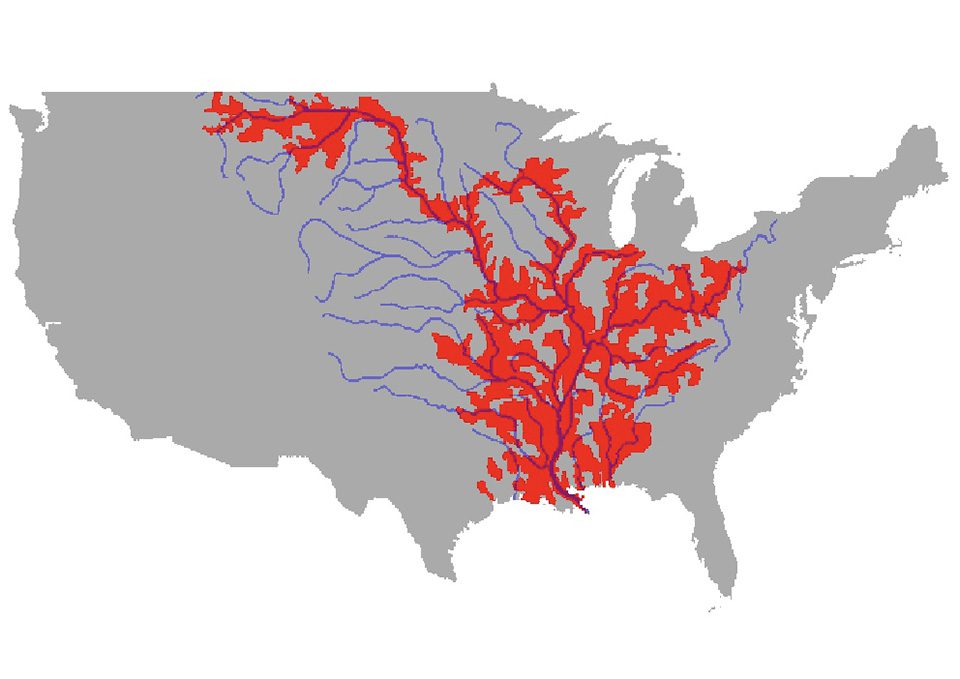
By TAM Staff
The American Paddlefish: A Living Fossil
The American paddlefish (Polyodon spathula), also known as the Mississippi paddlefish, spoon-billed cat, or spoonbill, is a fascinating species of ray-finned fish. This unique fish is the last living species of the paddlefish family (Polyodontidae), which is closely related to sturgeons1.
Physical Characteristics
The American paddlefish is easily recognizable by its smooth skin and almost entirely cartilaginous skeleton. Its most distinctive feature is its paddle-shaped rostrum (snout), which extends nearly one-third of its body length1. This rostrum is covered with tens of thousands of sensory receptors that help the paddlefish locate swarms of zooplankton, its primary food source1. The paddlefish has a heterocercal tail, resembling that of sharks, which has earned it the nickname “freshwater shark”1.

Habitat and Distribution
Native to the Mississippi River basin, the American paddlefish once roamed freely in large, free-flowing rivers, braided channels, backwaters, and oxbow lakes throughout the region1. Its range extended into the Great Lakes, with occurrences in Lake Huron and Lake Helen in Canada until about 19171. Today, the paddlefish inhabits slow-moving, large, deep freshwater rivers and reservoirs2.
Diet and Feeding
The American paddlefish is a filter feeder, primarily consuming plankton. It swims with its mouth open, filtering plankton from the water2. This specialized feeding adaptation is one of the reasons the paddlefish has survived for millions of years.
Conservation Status
The American paddlefish is currently listed as vulnerable by the International Union for Conservation of Nature (IUCN)1. Habitat destruction, pollution, and overfishing have significantly impacted its population. Conservation efforts are ongoing to protect and restore paddlefish habitats and ensure the species’ survival.
Conclusion
The American paddlefish is a remarkable example of a living fossil, with a lineage dating back 125 million years to the Early Cretaceous period1. Its unique physical characteristics, specialized feeding habits, and ancient lineage make it a fascinating subject of study for scientists and a symbol of the importance of conservation efforts.